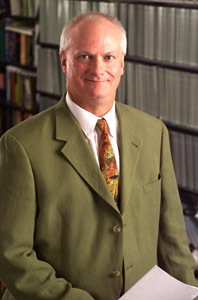Thursday, October 27, 2011 - 11:00pm
A series of tridentate diaryl imine ligands are appended to iron via C-H bond activation utilizing (Me3P)4FeMe2. The compounds generated selectively bind N2 from the air, with dinitrogen replacing a PMe3 ligand. The general chemistry of these species, including the preparation of related Fe(III) complexes, will be discussed. An alternative strategy toward C-C bond formation involves the generation of transient radicals that can couple at or around one or more metal centers. Generation of transient azaallyl ligands that reductively couple at CH positions possessing radical character is described. Two carbon-carbon bonds form, and the redox non-innocence of the resulting pyridine-imines permit a third CC-bond to form via dinuclear di-imine oxidative coupling. Unique metal-metal bonds are a consequence of the chelation. Related nacnac ligands are used to prepare "20e-" complexes, revealing their potential for "redox non-innocence."
Speaker:
Prof Pete Wolczanski
Institution:
Cornell
Location:
RH 104

